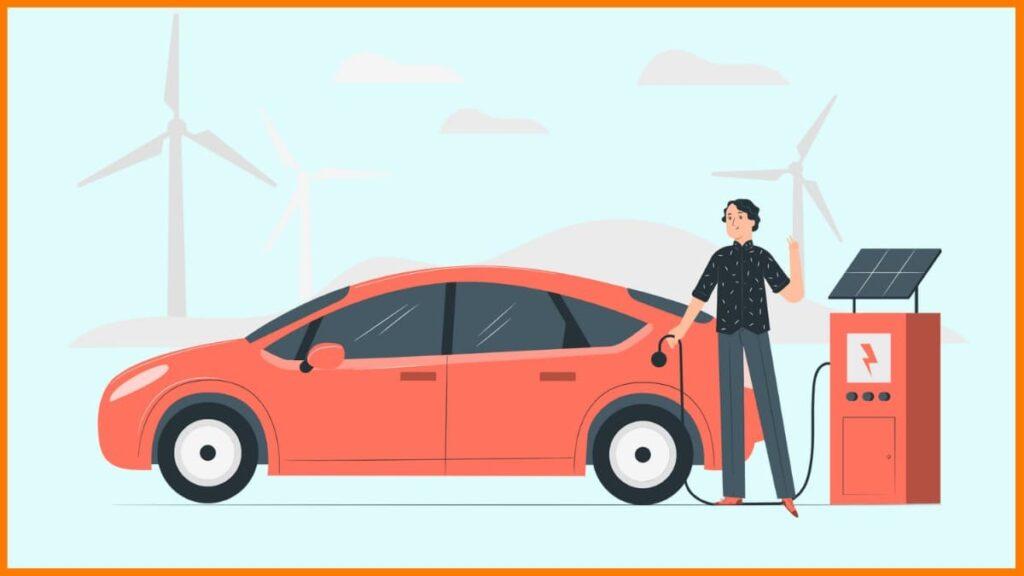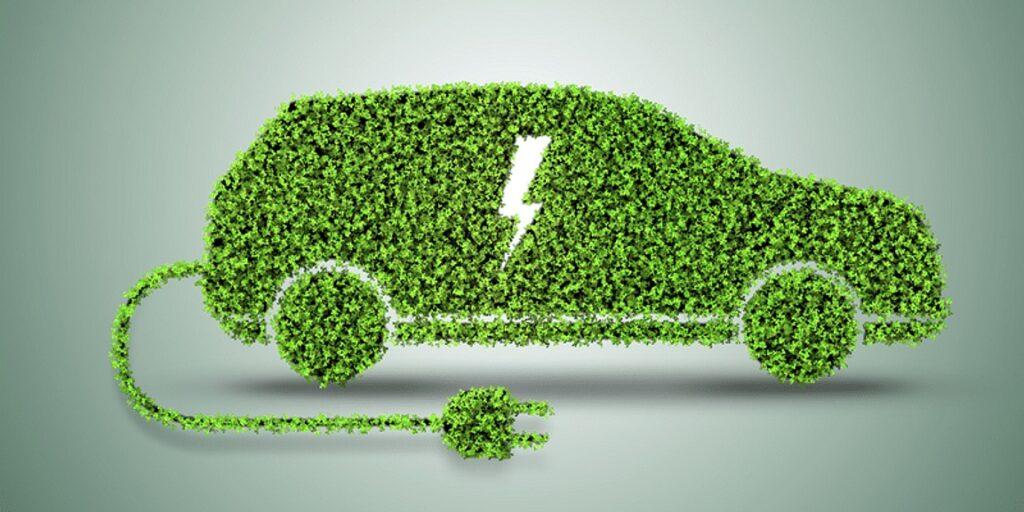Electric Vehicles the Key to Cleaner Air and a Greener Future
Electric vehicles (EVs) have ushered in a new era of mobility, but their impact stretches far beyond the realm of transportation. With the advent of bidirectional charging technology, EVs are poised to revolutionize the energy landscape, emerging as versatile assets that go beyond being just automobiles. This innovative technology empowers EVs not only to draw power from the grid but also to inject electricity back into it when required, effectively transforming them into backup power sources that enhance the stability and reliability of the electrical grid.
Bidirectional charging, often referred to as vehicle-to-grid (V2G) technology, has captured the attention of the utilities sector. Instead of relying solely on conventional fossil fuel power stations, utilities can now tap into the stored energy within EV batteries, harnessing them as part of virtual power plants. This groundbreaking development enables utilities to manage sudden spikes in energy demand and maintain grid stability by making effective use of the power stored within EVs. According to the non-profit organization Smart Electric Power Alliance (SEPA), the 2.1 million EVs currently traversing the roads of the United States collectively possess an astonishing 126 gigawatt-hours of battery storage. This staggering figure surpasses the capacity of the existing grid-connected battery storage systems by a factor of five, underlining the immense potential of V2G technology.
Moreover, bidirectional charging presents an array of advantages for EV owners, offering them a new level of flexibility and autonomy. This technology empowers EV owners to transform their vehicles into mobile power sources. By plugging various appliances and devices into the outlets in their EVs, owners can rely on their cars as a reliable source of electricity during power outages or times when electricity costs are at their peak. For instance, the Ford F-150 Lightning pick-up truck, equipped with a substantial battery pack, can, when connected to a bidirectional charger and a home power-management system, serve as a primary power source for a residence for an extended period, ensuring uninterrupted power supply.
The future of bidirectional charging holds great promise, especially as EV technology continues to advance. Major automakers such as Kia, Hyundai, and Ford have already integrated bidirectional batteries into their EV models, signifying the growing prevalence of this game-changing technology. Even industry giant Tesla, known for its dominant position in the electric vehicle market, has expressed interest in bidirectional charging, underscoring the profound impact it is poised to have on shaping the future of sustainable energy. As we embrace this transformative technology, we move closer to a world where electric vehicles not only provide efficient transportation but also play a pivotal role in securing a cleaner, greener, and more sustainable future for all.
Frequently Asked Questions (FAQ) about Electric Vehicles and Bidirectional Charging
What is bidirectional charging, and how does it work?
Bidirectional charging, also known as vehicle-to-grid (V2G) technology, is a system that enables electric vehicles (EVs) to not only draw power from the electrical grid but also inject electricity back into it. This technology uses a bidirectional charger that facilitates two-way communication between the EV and the grid, allowing power to flow in both directions as needed.
What are the benefits of bidirectional charging for the electrical grid?
Bidirectional charging offers several advantages for the electrical grid. It helps utilities manage peak energy demand by utilizing the stored energy in EV batteries, making the grid more stable and reliable. It also reduces the need for additional grid infrastructure and fossil fuel power plants, contributing to a cleaner and more sustainable energy landscape.
How do EV owners benefit from bidirectional charging?
EV owners can benefit from bidirectional charging in multiple ways. They can use their EVs as backup power sources during blackouts or emergencies, ensuring a continuous power supply for their homes or businesses. Additionally, by selling excess electricity back to the grid during periods of high demand, EV owners may potentially earn money or receive credits on their electricity bills.
Are all EVs equipped with bidirectional charging capabilities?
No, not all EVs are equipped with bidirectional charging capabilities. This feature depends on the specific EV model and its manufacturer. However, many automakers are increasingly integrating bidirectional batteries into their EVs, and the availability of bidirectional charging is expected to grow as the technology advances.
Can bidirectional charging be used for residential purposes?
Yes, bidirectional charging can be used for residential purposes. EV owners can install bidirectional chargers in their homes and connect their EVs to serve as backup power sources during blackouts. This technology can also help homeowners manage their electricity costs by selling excess energy back to the grid when electricity rates are high.
Is bidirectional charging safe for both the EV and the grid?
Yes, bidirectional charging is designed with safety in mind. It involves secure communication and control mechanisms to ensure the safety of both the EV and the grid. EVs equipped with bidirectional charging technology are engineered to meet stringent safety standards.
How does bidirectional charging impact the environment?
Bidirectional charging technology can have a positive impact on the environment. By reducing the need for additional fossil fuel power generation, it helps lower greenhouse gas emissions and promotes a more sustainable energy system. It also encourages the adoption of renewable energy sources, which further enhances its environmental benefits.
What is the future outlook for bidirectional charging and EVs?
The future of bidirectional charging and EVs looks promising. As EV technology continues to advance, more automakers are expected to integrate bidirectional batteries into their models. The growing interest in sustainable energy and the need for grid stability are likely to drive the widespread adoption of bidirectional charging technology in the coming years.
Where can I find bidirectional charging stations?
Bidirectional charging stations are still relatively limited in number compared to traditional charging infrastructure. They can typically be found in select locations, often in regions with a strong focus on electric mobility and grid innovation. To locate bidirectional charging stations, you can use EV charging station locator apps or websites that offer information on their availability.
How can I get started with bidirectional charging for my EV?
To get started with bidirectional charging for your EV, you will need a compatible EV model with bidirectional charging capabilities and a bidirectional charger. You can consult with your EV manufacturer or a certified electrician to ensure your EV and home are equipped for bidirectional charging. Additionally, research local regulations and incentives that may support the installation of bidirectional charging infrastructure in your area.
Electric Vehicles the Key to Cleaner Air and a Greener Future,Please note that the availability of bidirectional charging technology and related infrastructure may vary by location, so it’s essential to research the options specific to your region.

More FAQ about : Electric Vehicles (EVs)
Q1: What is an Electric Vehicles (EV)?
A1: An Electric Vehicle, or EV, is a type of vehicle that is powered by an electric motor using electricity stored in batteries. Unlike traditional vehicles that rely on internal combustion engines fueled by gasoline or diesel, EVs produce zero tailpipe emissions.
Q2: How does an Electric Vehicles work?
A2: EVs use electricity stored in high-capacity batteries to power an electric motor, which drives the vehicle’s wheels. The batteries are charged by plugging the vehicle into an electric power source, such as a charging station or a home wall outlet.
Q3: What are the main types of Electric Vehicles?
A3: There are three main types of Electric Vehicles:
- Battery Electric Vehicles (BEVs): Solely powered by electric batteries.
- Plug-in Hybrid Electric Vehicles (PHEVs): Combine an electric motor with an internal combustion engine and can be charged via a plug.
- Hybrid Electric Vehicles (HEVs): Use both an internal combustion engine and an electric motor but cannot be charged externally.
Q4: What is the range of an Electric Vehicles?
A4: The range of an Electric Vehicle refers to the distance it can travel on a single charge. The range varies among different models, but many modern EVs offer ranges that are suitable for everyday commuting. Advances in battery technology continue to improve EV ranges.
Q5: How long does it take to charge an Electric Vehicles?
A5: Charging times vary depending on the charging infrastructure and the vehicle’s battery capacity. Level 1 charging (standard household outlet) may take several hours, while Level 2 charging (home or public charging station) can take significantly less time. DC fast charging stations can provide a quick charge in around 30 minutes.
Q6: Where can I charge my Electric Vehicles?
A6: Electric Vehicles can be charged at home using a standard electrical outlet (Level 1) or a dedicated home charging station (Level 2). Additionally, public charging stations, located in various places like shopping centers, parking lots, and along highways, offer convenient options for on-the-go charging.
Q7: Are there government incentives for Electric Vehicles?
A7: Many governments offer incentives to promote the adoption of Electric Vehicles. These incentives may include tax credits, rebates, and access to carpool lanes. Check with local authorities to learn about available incentives in your region.
Q8: What are the environmental benefits of Electric Vehicles?
A8: Electric Vehicles contribute to lower greenhouse gas emissions and air pollution compared to traditional vehicles. They are more energy-efficient, and as the electricity grid shifts to renewable energy sources, the overall environmental impact of EVs continues to improve.
Q9: What is the maintenance cost of Electric Vehicles compared to traditional vehicles?
A9: Electric Vehicles generally have lower maintenance costs because they have fewer moving parts than internal combustion engine vehicles. There’s no need for oil changes, and brake wear is reduced due to regenerative braking systems.
Q10: Are Electric Vehicles suitable for long-distance travel?
A10: Yes, many modern Electric Vehicles are designed for long-distance travel. The availability of a charging infrastructure, including fast-charging stations along highways, makes it feasible to undertake long journeys with an EV. Planning routes and charging stops is crucial for a smooth long-distance EV experience.
Embracing Electric Vehicles contributes to a sustainable and cleaner transportation future. As technology advances and infrastructure grows, the popularity and accessibility of Electric Vehicles continue to rise.

